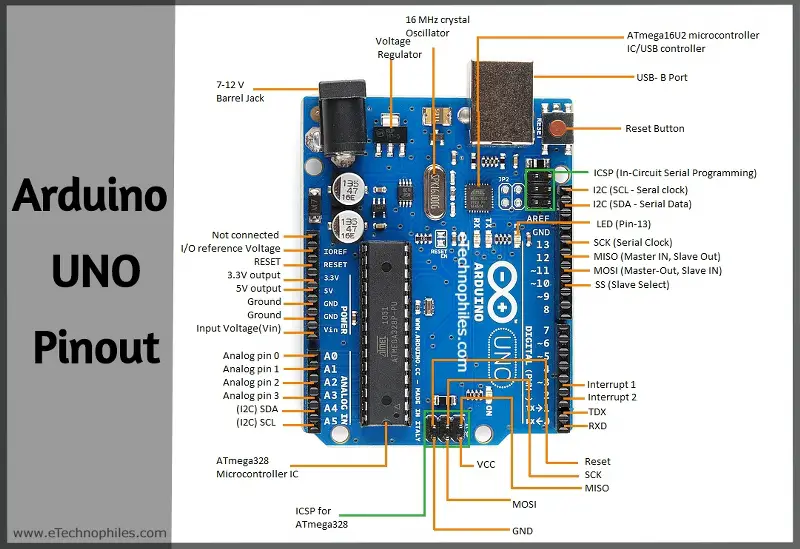
Both the wires acts as a differential line, meaning the CAN signal (0 or 1) is represented by the potential difference between CAN_L and CAN_H.
ARDUINO UNO PINOUT DEFINITION CODE
The size data can be anywhere from 0 to 8 bytes in length.ĭata Length Code (DLC): 0 to 8 for the number of data bytes present.ĬAN protocol consist of two wires namely CAN_H and CAN_L to send and receive information.

The length of the identifier is either 11 or 29 bits based on the type of CAN protocol used.ĭata: This is the actual sensor/control data that has to be send form one device to another. Identifier or CAN ID: The identifier is also known as a CAN ID or also known as PGN (Parameter Group Number). It is used to identify the CAN devices present in a CAN network. This message format contains of many segments but two main segments are the identifier and data which helps to send and respond to messages in CAN bus. In the CAN communication the data is transmitted in the network as a particular message format. Typically the communication speed for CAN ranges from 50 Kbps to 1Mbps and the distance can range from 40 meters at 1Mbps to 1000 meters at 50kpbs. When multiple CAN devices are connected together like shown below, the connection forms a network acting like our central nervous system allowing any device to speak with any other device in the node.Ī CAN Network will consist of only two wires CAN High and CAN Low for bi-directional data transmission as shown above. It is a message-based protocol used for communication between multiple devices.
ARDUINO UNO PINOUT DEFINITION SERIAL
Sounds interesting right! So, let’s get started.ĬAN a.k.a Controller Area Network is a serial communication bus designed for industrial and automotive applications. So, in this article we will look into the basics again and then finally we will also exchange data between two Arduinos using CAN communication. We have already discussed what is CAN and how CAN works. Out of all the available protocols CAN is more predominantly used and popular. Hence unlike standard communication protocols like UART, SPI or I2C, designers use much reliable automobile communication protocols like LIN, CAN, FlexRay etc. For example, cruise control system data like speed, throttle position etc are vital values which is sent to Electronic Control Unit (ECU) to decide the acceleration level of the car, a miscommunication or loss of data here could lead to critical failures. Unlike other sensors, these sensors process critical information and hence the data from these sensors should be communicated using standard automotive communication protocols. With car manufactures constantly making their car more smarter with features like Autonomous driving, Airbag system, Tire Pressure monitoring, Cruise control system etc.

Today any average car consists of around 60 to 100 sensor units in it for sensing and exchanging information.


 0 kommentar(er)
0 kommentar(er)
